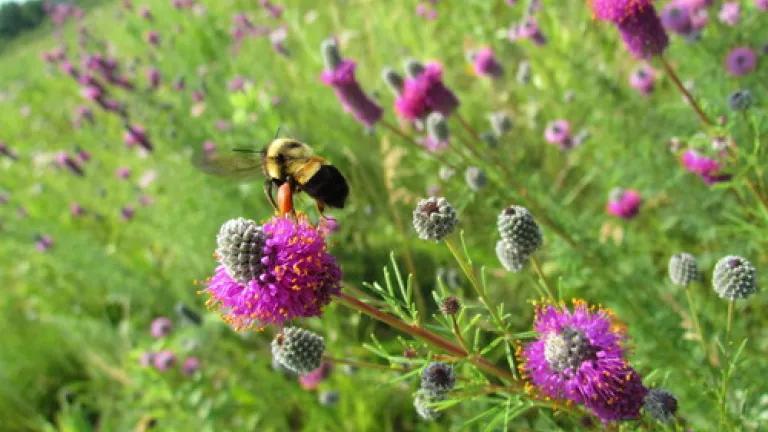
NRDC along with the Xerces Society for Invertebrate Conservation filed suit today on behalf of the rusty patched bumble bee. Over a year ago, Xerces Society petitioned the U.S. Fish and Wildlife Service and Department of the Interior to add the rusty patched bumble bee to the endangered species list. The agency is required by law to respond to that petition, and it hasn’t. So we’re taking them to court.
Bumble bees are bigger and furrier than honey bees. Unlike honey bees, bumble bees are also native to North America. The rusty patched bee has a dark orange patch on its middle, giving the bee its name and making it easy to identify.
The rusty patched bumble bee once ranged from Georgia to Maine and from Pennsylvania to North Dakota. Today, like so many of our pollinators, the rusty patched bumble bee is disappearing from our landscape fast. The bee is faced with a barrage of threats, including: loss of its historic prairie habitat, toxic pesticides, climate change, and parasites and pathogens spread from commercial bees. Scientists estimate that the rusty patched bumble bee has already been lost from over 80 percent of its historic range.
I’m human, and so I attempt to measure the cost of such a loss. Pollinators are necessary for the reproduction of more than two-thirds of the world’s crop species, and U.S. agriculture estimates that the economic per-year value of native pollinator services is three billion dollars. But how do you measure the fact that pollinators form the basis of the food web? If we lose our bees, we put a whole cascade of natural processes at risk.
It’s spring, and somewhere in the northern Midwest the rusty patched bumble bee queens are emerging from hibernation. Rusty patched worker bees—tiny catalysts of summer—are traveling from flower to flower collecting nectar and buzzing up against pollen. Like nature’s midwives, they assist flowering plants in the process of fertilization and fruit-making. Those fruits and seeds feed me and you, the bears, and the birds.
In my front yard, I have finches, black beetles, an occasional butterfly, and a new batch of baby rabbits. So far this spring, I haven’t seen a bumble bee. Have you?
Photo Credit: Christy Stewart, 2012.

